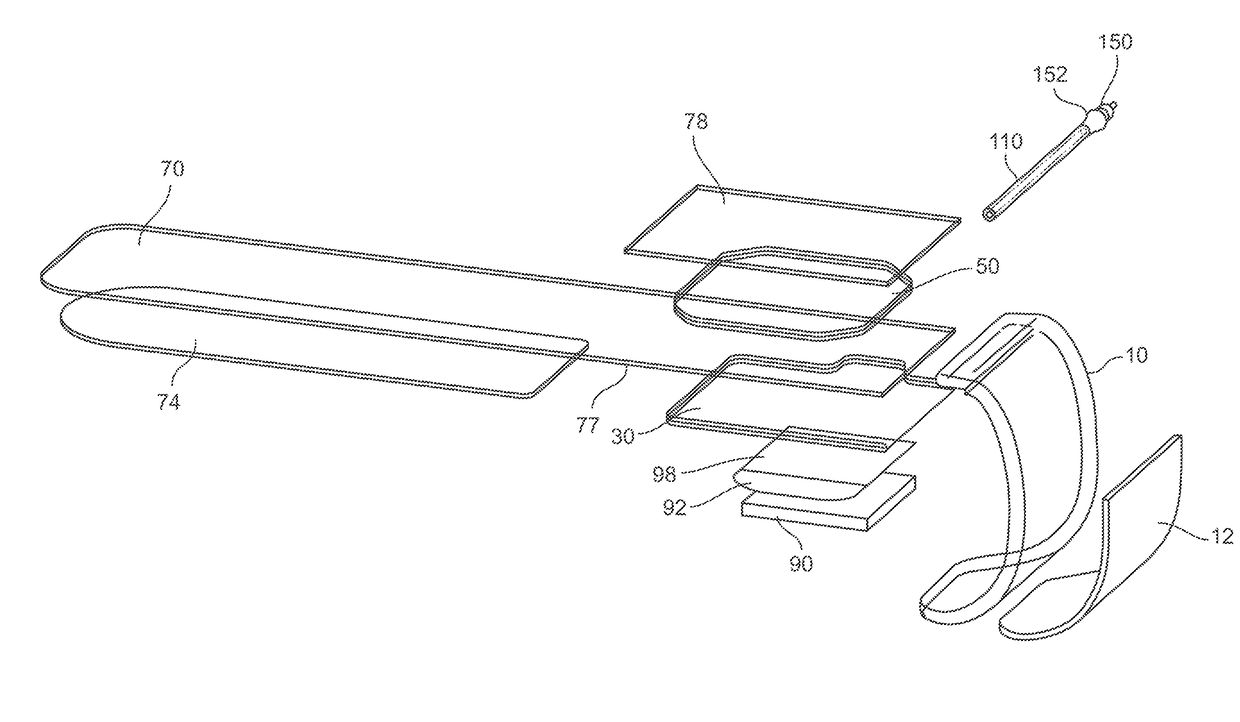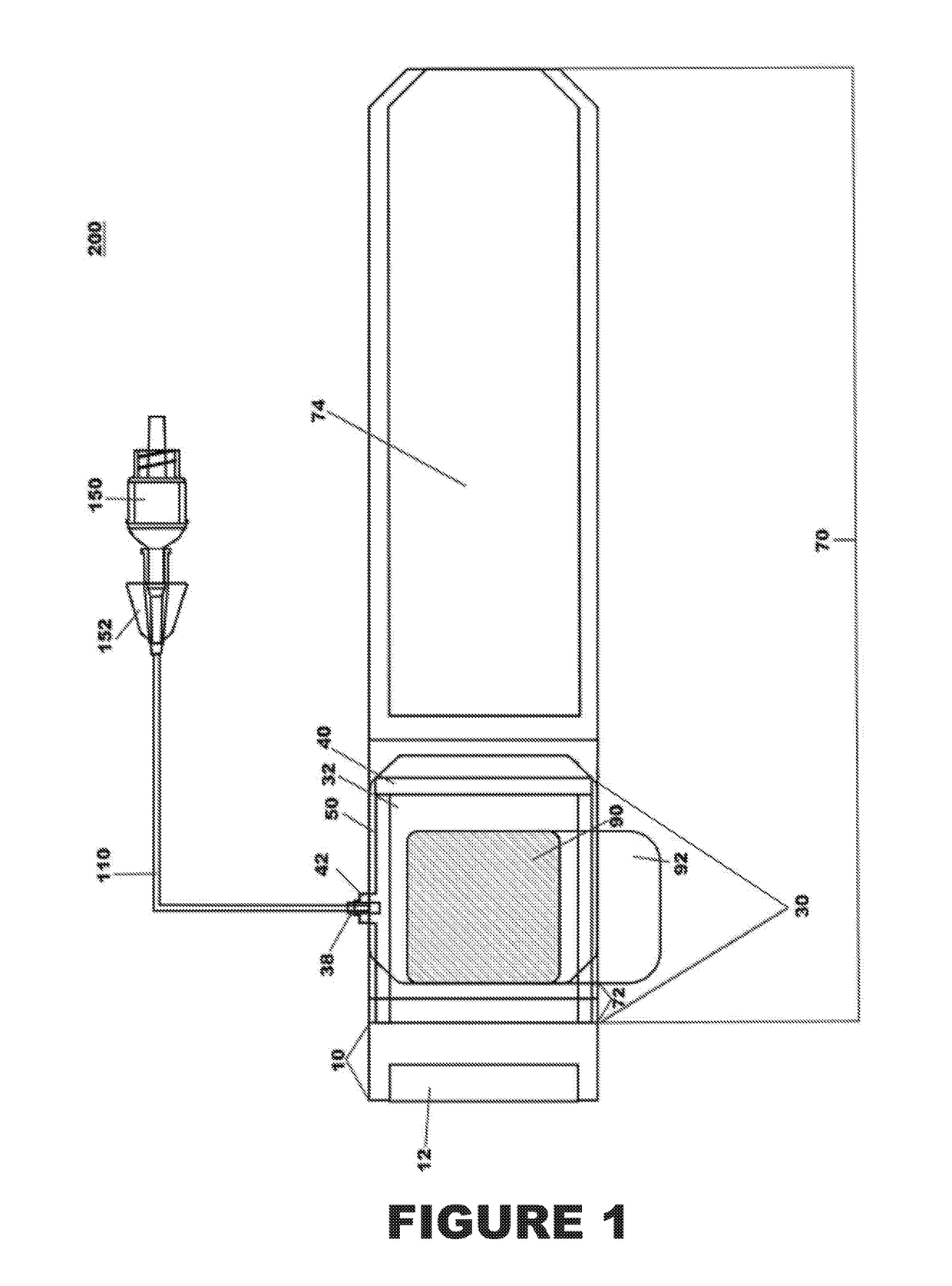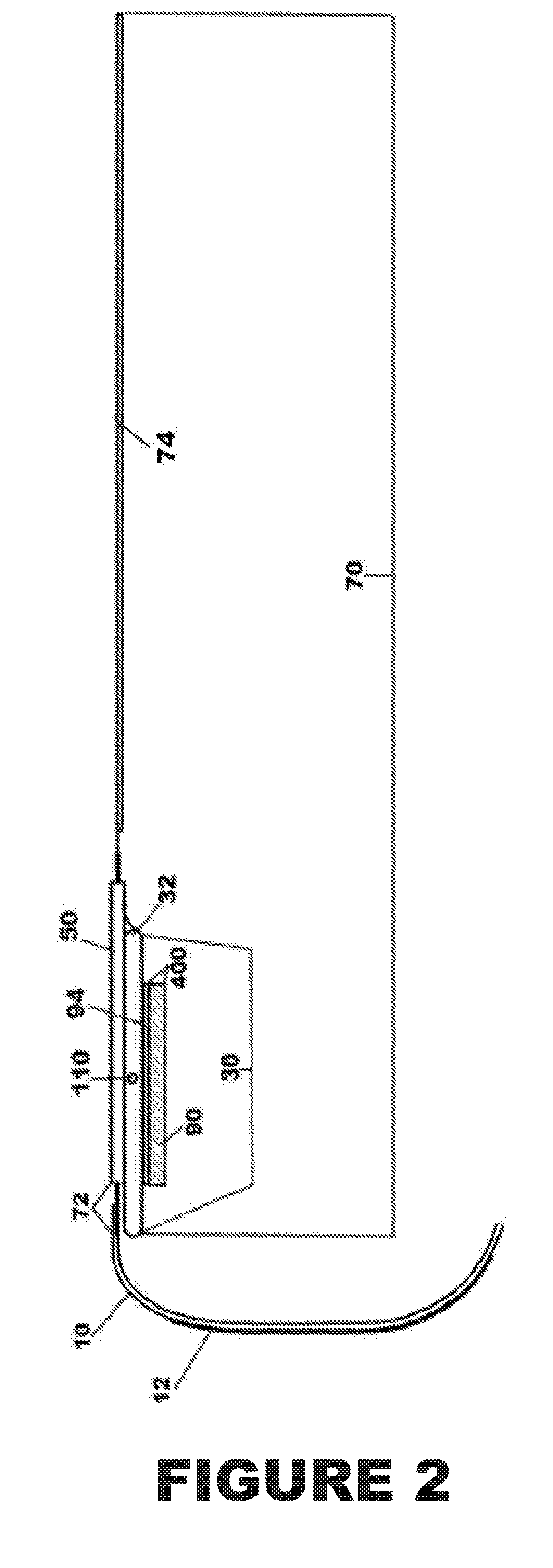Percutaneous vascular injury treatment systems and methods
a vascular injury and percutaneous technology, applied in the field of percutaneous vascular injury treatment systems and methods, can solve the problems of rebleeding or hematoma, occlusion of arterial or veins, ischemia and neuropathy in extremities, etc., to promote wound healing and wound closure, prevent rebleeding from the site, and promote wound healing and healing
- Summary
- Abstract
- Description
- Claims
- Application Information
AI Technical Summary
Benefits of technology
Problems solved by technology
Method used
Image
Examples
example 1
ndage Treatment of Arterial Injury in a Femoral Access Sheep Injury Model
[0110]Background. The femoral artery injury model in sheep was developed by the Oregon Health & Science University Dotter Institute to investigate hemostatic efficacy of percutaneous arterial closure devices (PACD's) compared to standard of care manual compression (Ni et al. 2009). The Dotter Institute sheep model provides a significant advantage over previous preclinical models of investigation of hemostatic efficacy of PACD's in that the Dotter model includes fluoroscopic angiographic imaging of the arterial injury site with ability to directly visualize arterial injury presence or absence of extravasation (bleeding). The 8-French sheath injury size used in this study creates a level of anti-coagulated (heparinized) bleeding that provides a challenging model for standard of care manual compression and is therefore a good model to investigate PACD arterial bleeding control treatment. The Dotter institute had p...
example 2
cy and Reliability of Balloon Compression System of the Invention
[0132]Background Consistent and reliable compression pressure delivery and maintenance is a critical design consideration in a vascular compression device. Inability to deliver and maintain pressure, and, in particular, gross pressure system delivery failure in hemostatic vascular compression devices could result in harm to a patient.
[0133]The balloon systems employed to deliver compression pressure in many vascular devices are susceptible to inadequacies and failures. Medical device manufactures are required to report adverse events to the US Food and Drug Administration (FDA) Center for Devices and Radiological Health (CDRH). MAUDE (Manufacturer and User Facility Device Experience) is a database of adverse events reported for medical devices. The online interface searches the CDRH database for information on medical devices that may have malfunctioned or caused / contributed to a death or serious injury. An online sear...
example 3
pplication and Comfort of the Compression Band and Hemostatic Dressing System
[0179]Background. This study investigated comfort, ease of correct application placement, and load change of the compressive band system around non-injured, volunteer subject wrists for a period of 120 minutes after initial loading to a target load of 700 g.
[0180]A significant advantage of the hemostatic efficacy of the compressive band and hemostatic dressing system of the invention over pressure only compressive band systems is that, immediate bleeding control is achieved with as little as 300 to 500 g of pressure placed locally over the preferred hemostatic dressing embodiment comprising a mucoadhesive, sealing chitosan dressing. This immediate bleeding control with moderate to low local load application has been demonstrated manually in studies by HemCon in application of its HemCon Bandage chitosan dressing over 4 mm diameter perforation injuries in swine aortas as well as in smaller arterial injuries....
PUM
 Login to View More
Login to View More Abstract
Description
Claims
Application Information
 Login to View More
Login to View More - R&D
- Intellectual Property
- Life Sciences
- Materials
- Tech Scout
- Unparalleled Data Quality
- Higher Quality Content
- 60% Fewer Hallucinations
Browse by: Latest US Patents, China's latest patents, Technical Efficacy Thesaurus, Application Domain, Technology Topic, Popular Technical Reports.
© 2025 PatSnap. All rights reserved.Legal|Privacy policy|Modern Slavery Act Transparency Statement|Sitemap|About US| Contact US: help@patsnap.com



